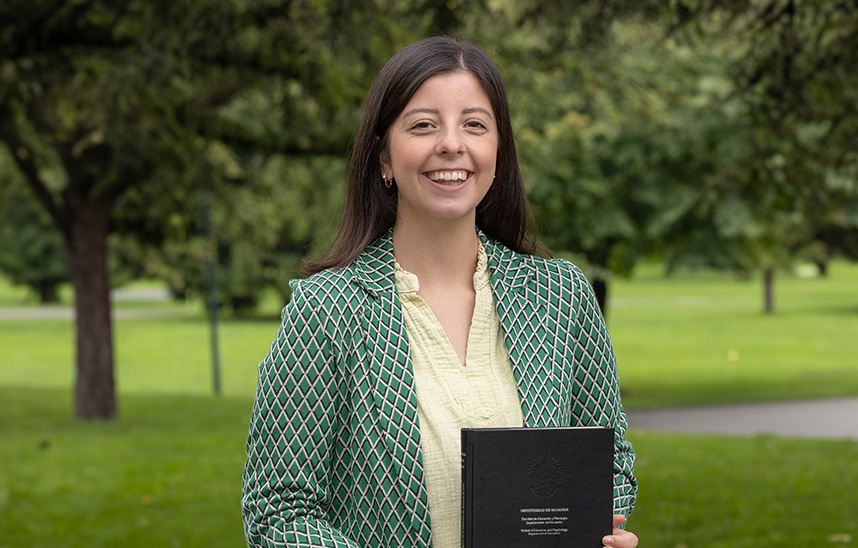A University study proposes a pedagogical framework to design educational programs aimed at preventing teacher burnout.
The pedagogical creativity and the use of the art museum as a space for the educational task are analyzed.

04 | 10 | 2024
"The artistic and creative Education can influence the emotional well-being of teachers, preventing burnout". This idea has been developed in her doctoral thesis by Carmen Basanta, a researcher at the University, who has designed a theoretical-practical framework that facilitates the design of educational programs with the goal to prevent burnout syndrome and promote the well-being professor, through the development of pedagogical creativity. "Pedagogical creativity lies in the freedom staff of the exercise professor, where the teacher is no longer seen as a mere technician, but transmits something that only he or she can offer," explains the researcher. To this end, she has collected the perceptions of 20 teachers from Navarre, 80% of whom have more than 15 years of experience professor , about their own pedagogical creativity.
In her study, Basanta analyzed the concepts of burnout and pedagogical creativity and how these are related in the research, and compiled the types of artistic-creative strategies most used in the prevention of the syndrome, such as mindfulness, creative writing or the contemplation of a work of art. This work of research highlights the art museum as a space "conducive to the re-personalization of the educational task, emotional rest or reflection on professional fulfillment". The study also includes a review of 35 international best practices in art museums such as the Thyssen in Madrid, the J. Paul Getty Museum in LA or the MASP in Brazil, among others. "The art museum is beginning to question its role with respect to social welfare and the proposals that are being made are still incipient but very promising," says Basanta.
Finally, the holding of a discussion group and the use of Delphi, a technique of enquiry to experts, in which more than 30 renowned professionals in the field of Education and well-being in museums participated, has made it possible to reach nine pedagogical guidelines. "These serve as guide for museum educators in the design of the proposals since they address elements ranging from methodology or objectives to those elements that favor the adherence of teachers to the proposals," concludes the author.
This work of research has been directed by the professor and researcher of the University of Navarra Carmen Urpí.




